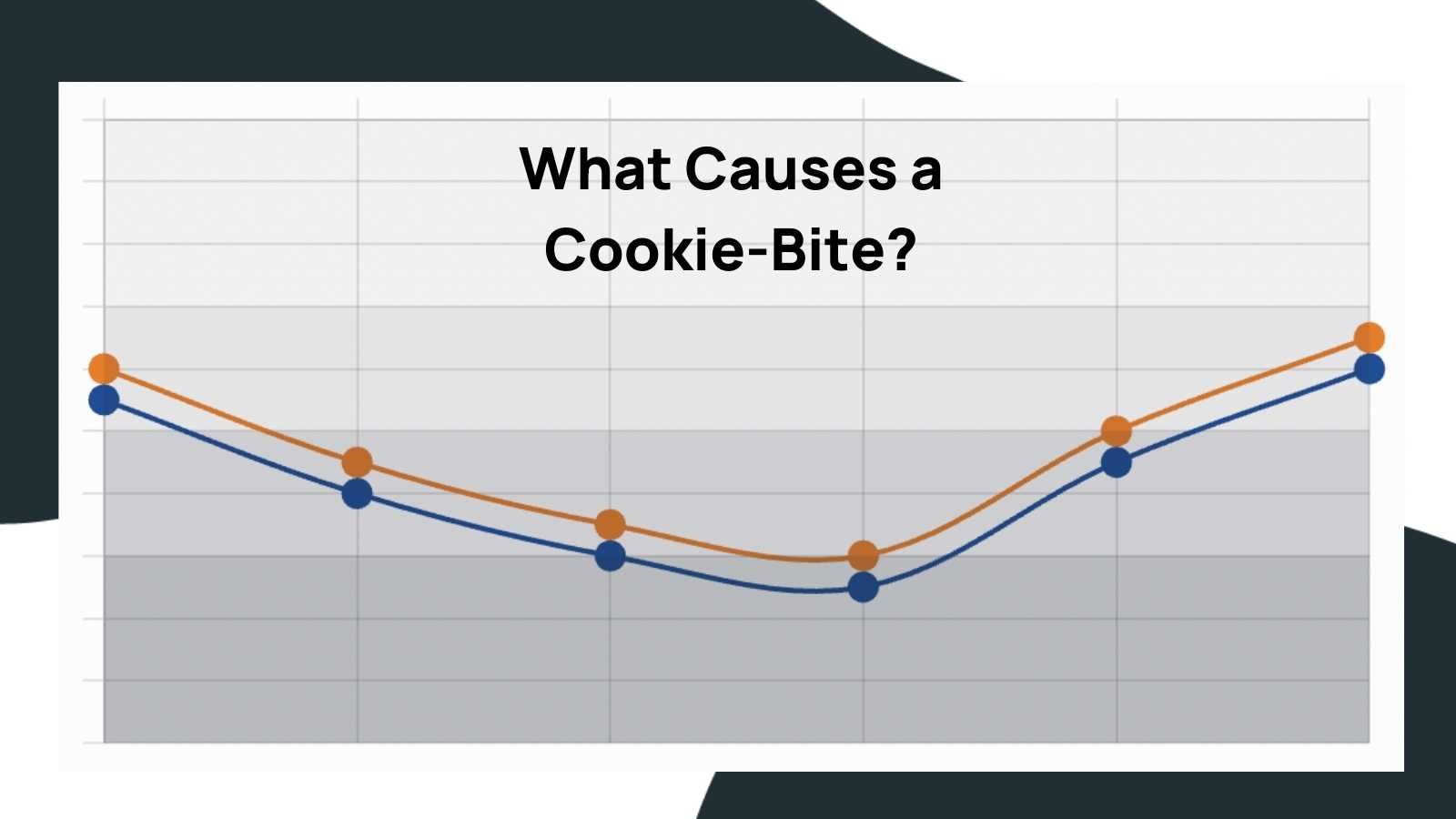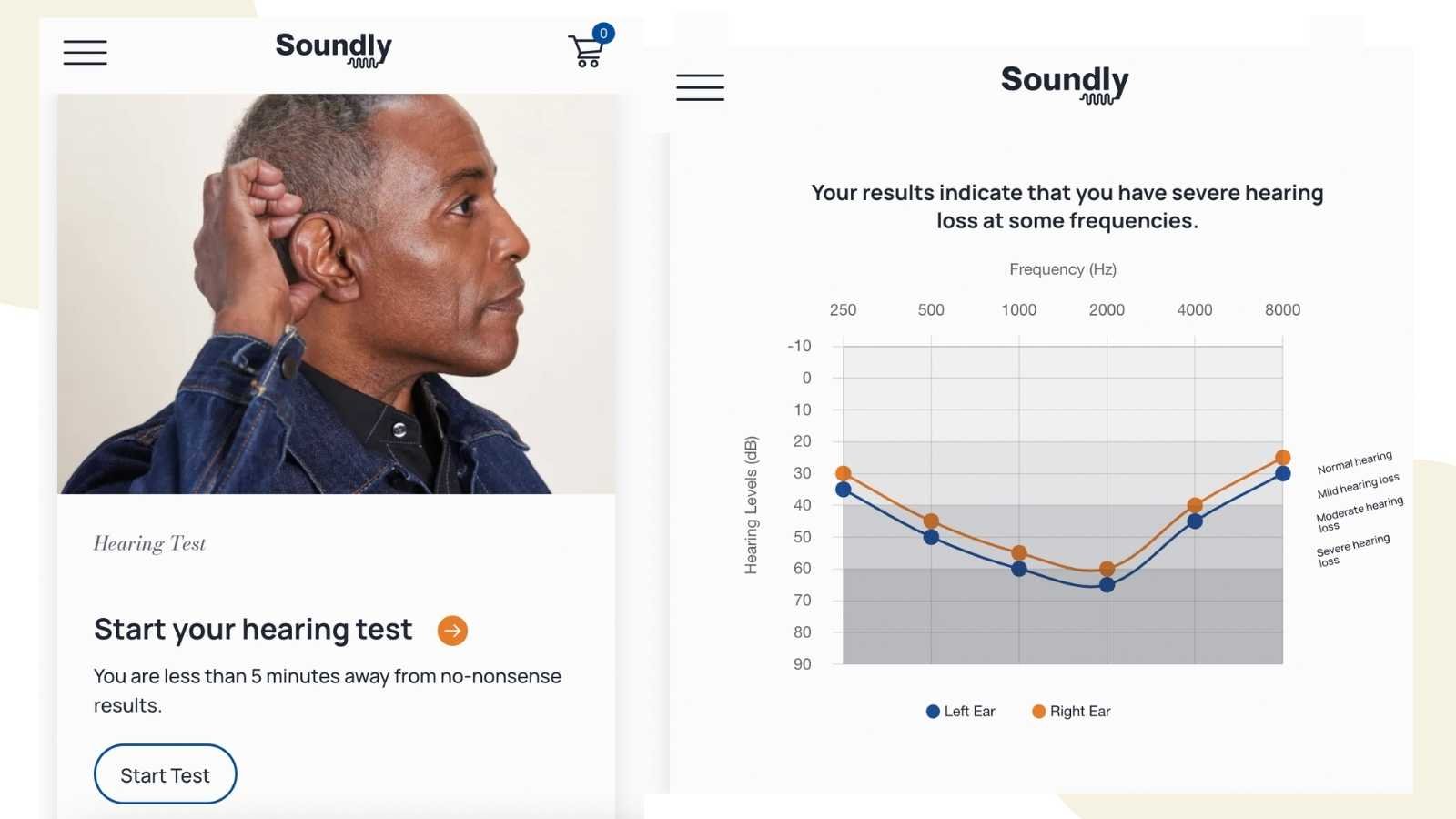Key Takeaways:
- Cookie-bite hearing loss gets its name from the 'bite' in the middle of the audiogram, where there is the most hearing loss (with better low and high frequencies).
- This type of hearing loss is typically genetic and can run in families.
- Ideally, children with cookie-bite hearing loss are identified early on and provided with amplification to help them learn at the same rate as their peers.

Have you heard about cookie-bite hearing loss or know someone who has it? Are you wondering more about what it is and what causes it?
In this article, we'll go through everything you need to know about cookie-bite hearing loss, including symptoms, tests, treatment options, and how to protect your ears.
Let's get started!
What Is Cookie-bite Hearing Loss and How Common Is It?

Cookie-bite hearing loss is sensorineural hearing loss, most noticeable in the mid-frequencies. As you might have guessed, this hearing loss has nothing to do with cookies. This moniker comes from the "U" shape of the audiogram.
Generally speaking, a person with cookie-bite hearing loss hears best at the low and high frequencies, with most of the hearing loss occurring in the mid-frequencies.
This hearing loss is typically genetic and most commonly affects both ears rather than only one ear.
It's estimated that 5 - 15% of children with hearing loss have a cookie-bite, and this number likely underestimates the prevalence of this type of hearing loss.
For some, cookie-bite hearing loss has a delayed onset. Additionally, genetic testing is still evolving, and it's only in recent decades research has started digging into this unique form of hearing loss.
From what we know, males and females are both equally susceptible to cookie-bite hearing loss.
Symptoms and Causes of Cookie-bite Hearing Loss
Common Symptoms
- Trouble understanding speech
- Asking for repetition
- Struggling in background noise
For those with cookie-bite hearing loss, having trouble hearing conversation or speech is a common symptom. The reason for this?
Many important speech sounds fall between 500 to 2000 Hz, the region with the most hearing loss for those with cookie-bite hearing loss.
Struggling in background noise is another symptom associated with cookie-bite hearing loss.
Background noise can mask speech sounds within that middle-frequency range, making it harder to hear these sounds. It can be very frustrating because your listening effort is devoted to teasing out the words rather than being more involved in the conversation.
If you notice that you're often asking for repetition or having trouble understanding, it's time to schedule a hearing evaluation to find out more about your hearing. You can try an online test here.
If you visit a local clinic, an audiologist will perform a comprehensive hearing evaluation, which provides detailed and frequency-specific information about your hearing acuity. The audiologist can also run a speech-in-noise test to assess your hearing in background noise.

Causes
- Genetic factors
- Autoimmune disorders
- Vestibular schwannoma (a benign auditory nerve growth)
Cookie-bite hearing loss is most commonly associated with genetic factors, meaning it tends to be an inherited trait. Connexin 26 is one known genetic cause of cookie-bite hearing loss. However, there are other genes associated with cookie-bite hearing loss. Some traits are dominant, while others are recessive. Depending on the gene, this hearing configuration may run in families, skip a generation, or affect some family members and not others. It can also range in severity but tends to progress over the lifespan.
Autoimmune disorders, also known as autoimmune inner ear disease (AIED), can also cause a cookie-bite hearing loss configuration. In this case, hearing loss can fluctuate, and the configuration, or shape of the audiogram, may resemble a cookie-bite. Those with AIED should consult with an ENT, especially if their hearing fluctuates.
Another, more rare, cause of a cookie-bite hearing loss can come from a benign growth on the hearing nerve, called a vestibular schwannoma. Again, this condition is very rare, but it should be evaluated and monitored by an audiologist and/or ENT. If you are experiencing hearing loss in one ear in addition to tinnitus and dizziness, it's time to call your doctor for an evaluation to rule out any underlying medical conditions.
How to Test for Cookie-bite Hearing Loss

Genetic Tests
If hearing loss runs in your family and you want to investigate, there are genetic tests that can provide insight. The University of Iowa does research in this area. The university's protocol is called OtoSCOPE® and is one of the most comprehensive genetic tests for hearing loss in the world.
At present, scientists have identified over 130 genes known to cause cookie-bite hearing loss.
Research is still ongoing and evolving, and as more genes are identified. You can contact the University of Iowa directly if you are interested in joining their genetic testing program.
Hearing Tests
Most people who suspect a hearing loss in themselves or their child will undergo a hearing test.
Because genetic hearing loss can appear in childhood, it's important to identify it early to provide appropriate intervention.
Children with hearing loss can develop speech and language delays, which can lead to difficulty in school.
Newborn hearing screenings help to catch hearing loss early on, but any child with a speech and language delay should be evaluated for potential hearing loss.
These are a few of the common hearing test methods for children.
Otoacoustic Emissions (OAEs)

When children are too young to do a traditional behavioral hearing test, there are other objective measures of hearing. For example, one test is called otoacoustic emissions (OAEs), and the results show whether the inner ear is functioning normally.
This test works by playing sounds in the ear, and when the inner ear receives them normally, it will send back a different sound. Think of it a little like an "echo" from the ear. If this sound is recordable, it rules out all but mild hearing loss.
Auditory Brainstem Response (ABR)

ABR testing measures how the hearing nerve responds to sounds. This test can be performed unsedated for children six months old or younger.
Children over the age of 6 months will have the test under sedation. For an unsedated ABR test, parents are asked to bring the baby in when he or she is tired.
This is because the test will be most accurate if the child can sit quietly or sleep during the test. An earphone is placed in the ear and then small stickers are attached on different parts of the head to record the hearing nerve's responses.
A sound is played in the ear, and responses from the hearing nerve are recorded. An ABR can be useful to determine the severity of a child's hearing loss, which can then be used to fit hearing aids.
Visual Reinforcement Audiometry Test

At around 18 months of age, children are able to do other types of hearing tests that include their participation in the process.
One type of hearing test is called visual reinforcement audiometry (VRA). This test will be a sort of 'game' when the child hears a sound to the right or left, followed by a visual such as a cartoon or animated toy.
The child then turns his or her head towards the sound in anticipation of the fun cartoon. When these head turns are observed to sounds within the normal hearing range, it rules out hearing loss in at least the better ear.
For older children that can tolerate wearing headphones, it's possible to collect ear-specific information.
This type of hearing test is called conditioned play audiometry. The child will also play a game and listen for the beeping sounds, putting blocks or toys into a box when they hear them.
Traditional Hearing Tests to Diagnose Cookie-Bite Loss

Older children and adults can do a traditional hearing test, which involves listening for beeps and pressing a button or raising their hands when they hear them.
This type of a hearing test is made of three parts: air conduction testing (listening for beeping sounds while wearing headphones), bone conduction testing (listening for beeping sounds while wearing a headband), and speech testing (repeating words).
You can take an online version of a hearing test for free here. This online screener won't replace a full audiologist workup, but it's a great place to start.

How to Treat Cookie-bite Hearing Loss
Hearing aids are the most common treatment for cookie-bite hearing loss.
Of note, a cookie-bite hearing loss can require some more advanced skill from an audiologist to provide treatment that is both beneficial and well-tolerated.
The configuration of the hearing loss means that the low and high frequencies will need little to no amplification, while the targeted region for volume enhancement is in the middle frequency range. It takes skill to accomplish this from a fitting perspective.
When children are very young, they won't be able to give much information about their sound quality preferences. Luckily, a pediatric audiologist can program hearing aids for children based on their hearing test results and fit a hearing aid using Real-Ear Measurement (REM) to confirm appropriate audibility at a safe volume.
Of course, adults can provide more feedback on their subjective sound quality preferences. The audiologist will set the hearing aids at prescriptive targets based on the degree of hearing loss. However, there is both an art and a science to fitting a cookie-bite hearing loss optimally. Think of it as a partnership with your audiologist: the best results are achieved through teamwork.
There are three key points to properly fitting hearing aids for a cookie-bite hearing loss:
1) An earmold or dome tipthat makes use of natural low-frequency hearing. More open-fit dome-tips will allow natural sound to flow into the ear, which is especially useful in the case of cookie-bite hearing loss, where high and low-frequency hearing can be quite good.
2) A hearing aid with narrow frequency bands, allowing for targeted mid-frequency amplification without adding much volume to low and high frequencies. (A premium hearing aid typically provides the narrowest frequency bands for adjustment.)
3) For sound quality preference, using a smartphone app can help you make minor adjustments to achieve your desired sound quality. Share your preferences with your audiologist. This input allows them to create the most effective settings for you.
How to Protect Your Ears if I Have Cookie-bite Hearing Loss
Hearing protection is important for those with normal hearing as well as anyone with existing hearing loss.
Think of your daily sound exposure similarly to your daily sodium intake. Too much is not good for your health. Here are some tips:
- Avoid loud environments or loud sound exposure.
- If you will be exposed to sounds over 80 dB(A), wear hearing protection. Not sure how loud your environment is? Try the NIOSH app.
- Choose hearing protection that fits appropriately. Ask an audiologist for advice if you are unsure what will work best for you.
- If you enjoy listening to music on headphones, limit the output or don't turn it up all the way.
Taking precautions helps you continue enjoying your hearing for years to come!
Final Thoughts
Cookie-bite hearing loss can make it difficult to hear and understand speech. And while there is no cure for this hearing loss, treatment options like well-fitted hearing aids can help. If you have trouble hearing, it's always a good idea to get in touch with a hearing professional to schedule an appointment and discuss appropriate treatment options.






